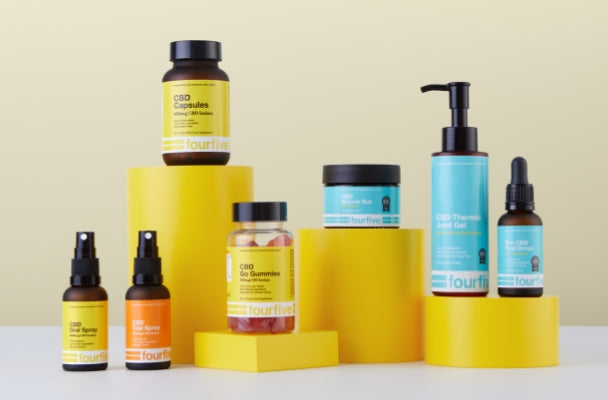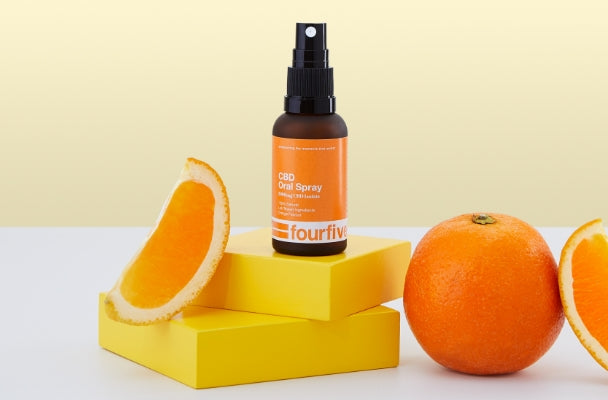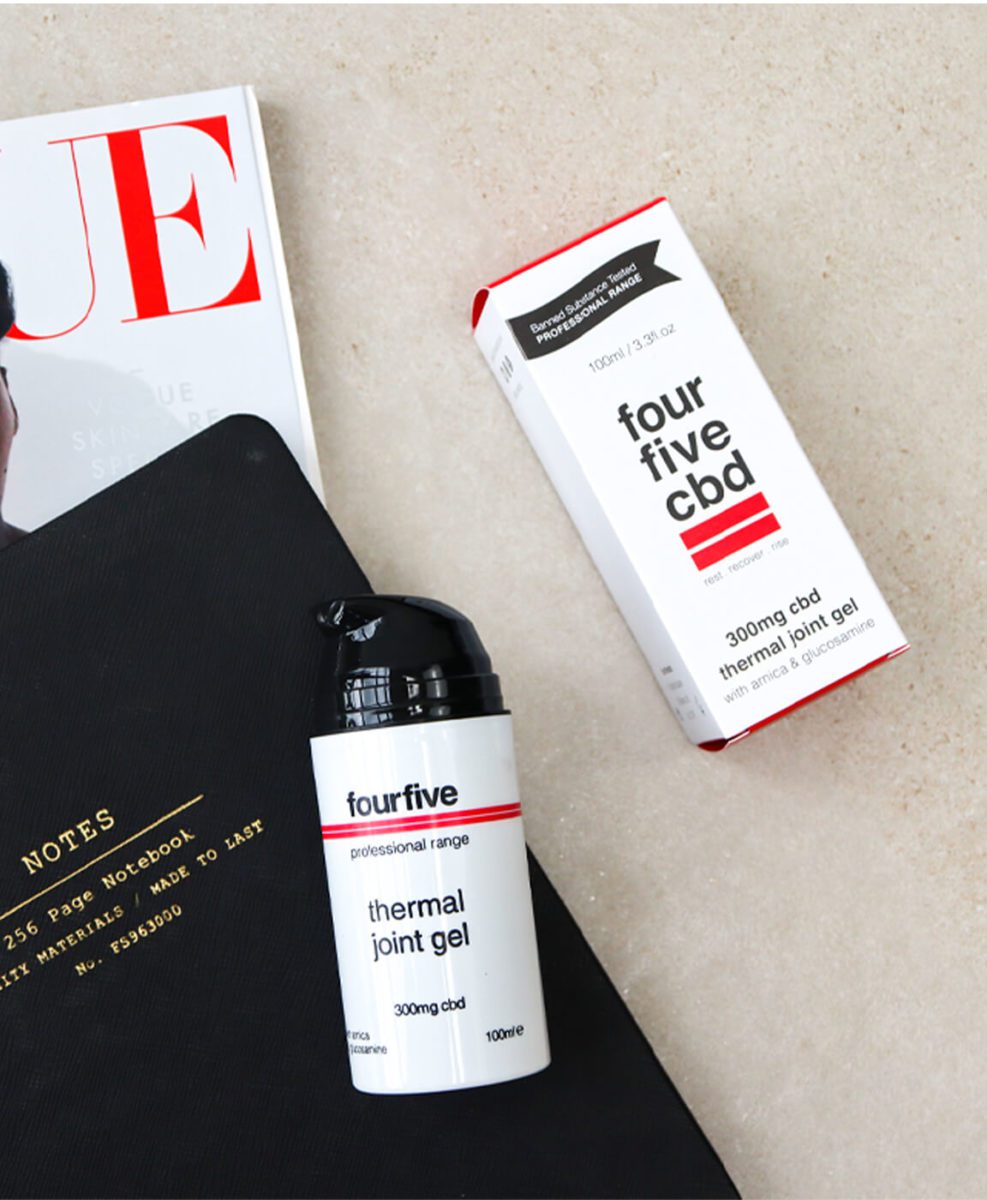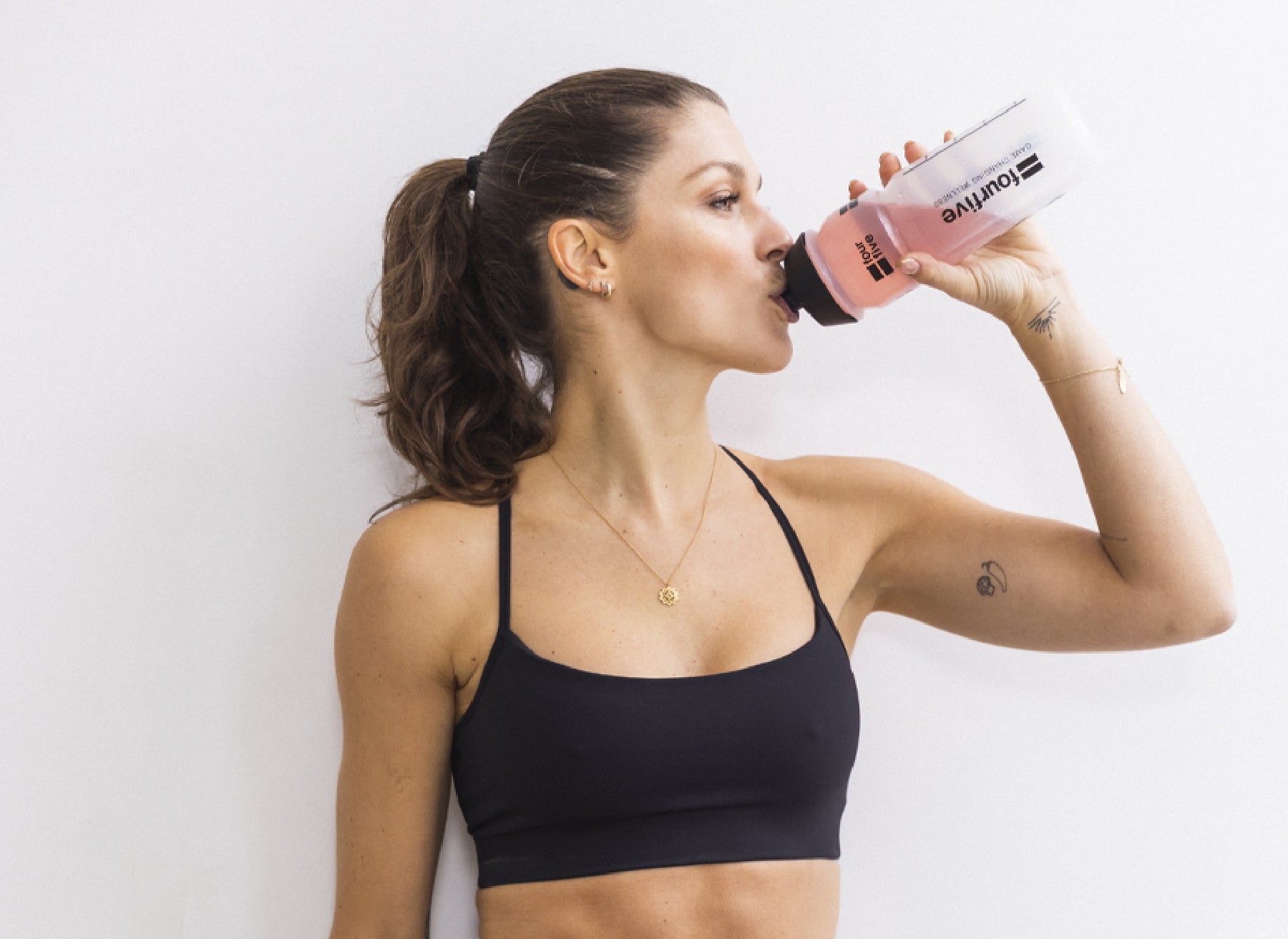CBD joint gels and muscle rubs haven’t quite replaced a pack of ice as the modern athlete’s go-to solution for a bit of post-workout soreness, but they’ve made impressive progress in just a few short years. As recently as 2016 (doesn’t that feel like several centuries ago?), asking your average rugby star if they’d ever tried cannabidiol would’ve earned you a blank stare.
Today, it still might—but the minute you clarify ‘cannabidiol is just the scientific name for CBD,’ you’re likely to get a much warmer reaction. The demand for all things CBD has grown so enormous that chemists across the UK are wondering if they can afford to ignore the CBD market any longer.
And for a famously health-conscious group like athletes, CBD joint gels and muscle rubs are rapidly becoming an essential part of their kit. These topical products (i.e. ones meant to be applied to your skin) are new twists on old favourites like Vicks VapoRub or Biofreeze, but with one key difference: the titular CBD.
A naturally occurring compound in the hemp plant—the source of all the UK’s over-the-counter cannabidiol products—CBD is both non-intoxicating and legal in the UK. So long as it contains less than 0.2 percent THC, which gives marijuana its trademark high, a CBD joint gel or muscle rub has the same standing under the law as any other gooey substance you might rub on your shoulders after training.
So why have these CBD-infused topicals become such a hit, then? Part of it is no doubt due to the novelty factor, but studies have shown CBD topicals could have a range of benefits for the body, above and beyond what non-CBD products can offer. It’s an enticing proposition for athletes: who wouldn’t want to feel better without having to do extra work, after all?
But whilst CBD joint gels and muscle rubs have been hailed by some as the future of sports recovery, they’ve also been questioned by others (understandably, considering how new and unfamiliar they are).
It’s a debate worth examining in (just a bit of) detail.
How Do CBD Joint Gels and Muscle Rubs Work?
We humans are messy, complex beings. Our bodies are full of systems that are constantly fighting—and sometimes succeeding—to achieve a state of ‘homeostasis,’ or balance. Most of us try to do what we can to help out in this regard.
For example, when your digestive system is struggling to manage an especially large load of cheese, you might reach for the probiotics.
Our bodies have another system that’s just as important, even if it’s not as well known. It’s called the endocannabinoid system (ECS): a network of receptors throughout the body that controls a surprisingly wide array of functions (which is why CBD can have such a constellation of effects).
The receptors of the ECS are found in the brain, gut, muscles—and the skin, which is the largest organ of the body. Understanding this point is key to understanding how CBD topicals like joint gels and muscle rubs do their thing.
Unlike CBD cosmetics such as mascara or lip balm, which are intended to work only on the ECS receptors of the skin, CBD joint gels and muscle rubs are often designed to activate receptors both on and under the skin.
It sounds simple enough—and in theory, it is. However, the unregulated nature of the UK’s CBD market presents some challenges for those seeking to find a CBD joint gel or muscle rub that’s actually worth the money.
Here’s how to make sure you’re not getting ripped off in your quest for a CBD product right for you.
What to Look For in a CBD Joint Gel or Muscle Rub
If you’ve ever walked into your local sport shop and asked for a recommendation on protein powders, you’re already familiar with the peculiar terminology and intense attention to detail this type of shopping can entail. Fear not, though—trying to find a good CBD muscle rub or joint gel is actually a good deal easier than you’d think.
For one thing, you don’t have to worry about memorising a small glossary of cannabis-related scientific terms. In fact, if you just focus on the points below, chances are you’ll find what you’re looking for:
Independent Lab Testing
Here’s the bad news: since the UK government is still sorting out its CBD regulations, there are no official tests a given joint gel or muscle must undergo before it can reach the market. The good news is that independent testing laboratories have sprouted up around the country to fill this need.
The UK’s Centre for Medicinal Cannabis (CMC) has been calling for better regulation of the CBD industry ever since store shelves became swamped with CBD products from scam artists looking to get a piece of the action, which is estimated to reach £1 billion by 2025. Lately it seems like their activism is working—and athletes are all the better for it.
Lab testing not only ensures that a CBD joint gel or muscle rub contains less than the legal amount of THC, it also helps show that the topical is free of pesticides, solvents, and other things you’d prefer to avoid rubbing on your skin. Typically, you’ll be able to find the results of these tests directly on the brand’s website (if they’re not easy to find, your suspicions should be raised).
Most CBD products currently being sold undergo this kind of testing, but some brands catering specifically to athletes go above and beyond this standard by having their products tested for banned substances as well.
Amount of CBD
First, an admission: there’s no agreed-upon ‘right amount’ of CBD for a joint gel or muscle rub to have. All things being equal, you’d prefer your topical to have more rather than less—according to a report from the World Health Organisation (WHO), there’s no risk of ‘overdosing’ on CBD, as it’s non-toxic and non-addictive.
However, it’s not quite as simple as just choosing the product with the most CBD. The reason why is evident to anyone with a basic grasp of maths: what you’re really looking for is the concentration of CBD.
If you’re looking at a 100 ml joint gel, for example, then 300 mg of CBD is quite good. But if you were to expand that gel up to 500 ml, even doubling the amount of CBD up to 600 mg would still leave you with a less potent product.
Since CBD topicals vary so widely in their composition and purposes, making an apple-to-apples comparison may be a little tricky (a muscle rub and a joint gel might have quite different concentrations, for example).
However, comparing multiple types of the same product will give you a good idea of the ‘baseline’ amount of CBD a topical should contain.
Type of CBD
Aside from the quantity of CBD your topical contains, you should also consider what type of CBD is in it. If you didn’t know there were different types of CBD, you’re not alone. And you don’t have to get bogged down in understanding all the nuanced ways in which they’re different.
All you have to remember is that there are three main types of CBD oil, and they’re not the same when it comes to THC.
- Full spectrum CBD is the least-refined, and contains all the compounds naturally found in the hemp plant
- Broad spectrum CBD has been processed to remove the THC while keeping the other non-CBD compounds
- CBD isolate is sometimes called ‘pure CBD’ because every other compound has been removed
Choosing the right CBD topical for you depends in large part how you feel about THC. It’s worth remembering that there’s not a CBD joint gel or muscle rub out there that will get you high, since even full spectrum products contain mere traces of THC.
Many athletes opt for CBD isolate topicals to play things safe, but ultimately it’s a matter of personal preference.
Other Ingredients
The CBD might be the main attraction, but a good joint gel or muscle rub will also bring some other friends to the party.
For example, some brands mix essential oils with CBD for a double-barreled natural product. Essential oils like lavender have been known to have calming properties, while lemon essential oils provide a burst of energy.
Apart from their various body benefits, essential oils also have perks for your nose. Whilst many people enjoy unscented CBD joint gels and muscle rubs, the hempy aroma isn’t for everyone.
You should also check whether your CBD topical contains ingredients like menthol or capsicum. These are known for providing cooling and heating sensations, respectively, which can add a nice touch when applying your topical.
Transdermal vs. ‘Regular’
Earlier, we mentioned that CBD joint gels and muscle rubs work not only on the surface of skin, but also on the muscles and joints below. It turns out that this can be a bit tricky, because penetrating through all that tissue isn’t easy.
However, studies have shown that transdermal CBD can be effective at addressing those issues that are more than skin-deep.
Transdermal products are nothing new in the world of skincare or athletic performance. Essentially, they’re products designed to permeate deep into the body. Their molecular composition allows them to slip through tiny cellular openings that act as roadblocks to conventional products.
Depending on the symptoms you’re trying to address, you may or may not need this extra-potent formula. But it’s something to keep in mind as you shop, if nothing else.
The Last Word on CBD Joint Gels and Muscle Rubs
By now, you’ve got a fairly robust understanding of CBD topicals like joint gels and muscle rubs, but there are a few important things left to cover.
First, make sure to talk to your doctor before using a CBD joint gel or muscle rub. Medical experts widely agree that CBD itself is safe, and interactions with medications are rare. However, just as you’d ask their input if you were starting a new diet or exercise regimen, it’s a good idea to check in here as well.
Also, whilst drug tests don’t test for CBD—they’re only interested in detecting levels of THC—false positives have been recorded in some cases. As with drug interactions, these cases are rare. Newer tests claim to have fixed this problem, though only time will tell.
With that being said, CBD topicals are generally some of the safest and most popular ways to use CBD.
For the overwhelming majority of people who use CBD joint gels and muscle rubs, the pros far outweigh the cons, which is why these products continue to fly off the shelves. It’s a good idea to keep your wits about you if you decide to join the fray, but as long as you remember the points above, you’ll be in good shape.






